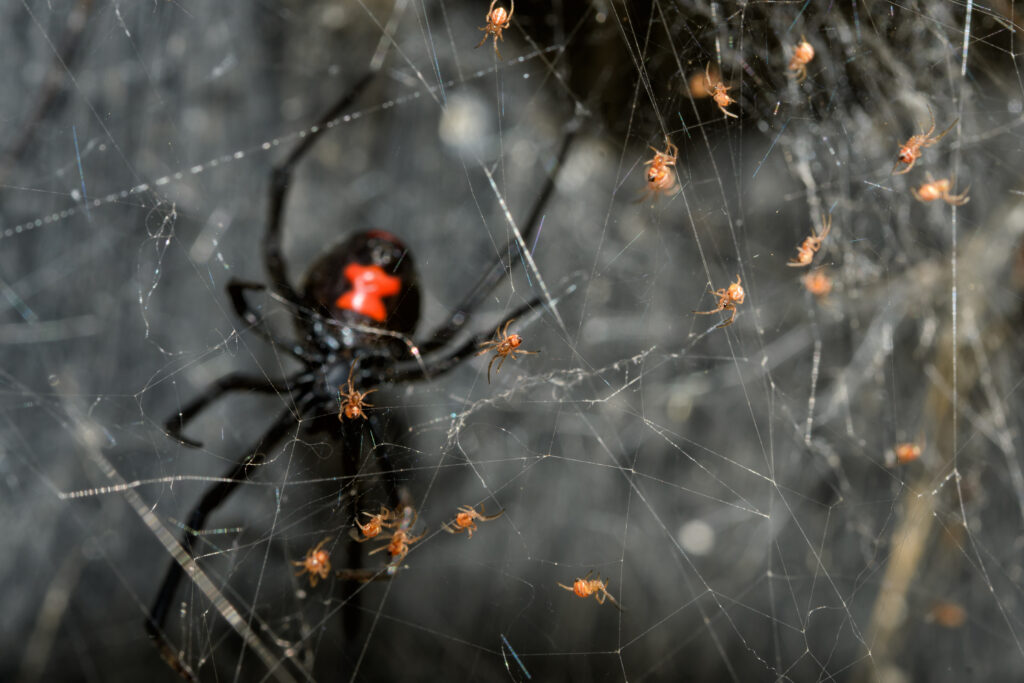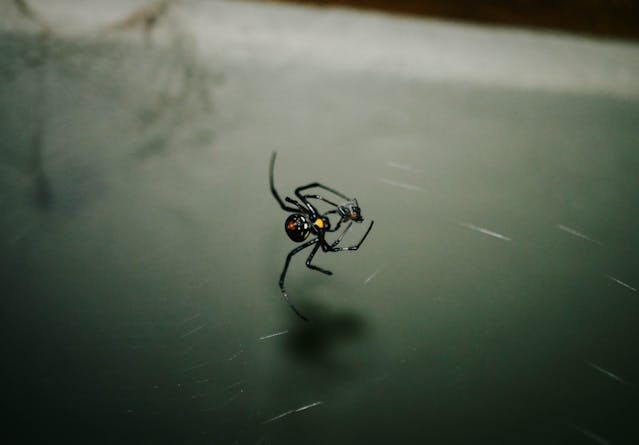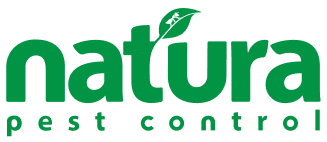Washington is a hotspot for biodiversity, hosting a variety of flora and fauna that could fill volumes of nature journals. Among these residents are numerous spider species, each playing a crucial role in the ecosystem. However, not all spiders are equal, especially when it comes to their interactions with humans!
Understanding the types of dangerous spiders in Washington and how to identify them can keep you safe and sound from these creepy crawlers. So, let’s debunk some myths and learn how to spot the true threats lurking in the corners of our beautiful state.
Venomous Spiders in Washington
A spider is considered venomous based on its potential to inject venom that can cause significant medical symptoms in humans. Not all spider venom is harmful to humans; in fact, most spiders cannot penetrate human skin with their venom or produce venom that has little effect on humans. However, a few local species have venom potent enough to warrant some caution.

Hobo Spider (Eratigena agrestis)
The hobo spider is a somewhat nondescript brown spider with a ¼ to ½ inch-long body. It can be identified by a distinctive chevron pattern on its abdomen, although these markings can fade as the spider ages.
Commonly found throughout Washington, hobo spiders are ground dwellers that prefer moist environments. They typically build funnel-shaped webs in holes, cracks, and other secluded areas near the ground.
Previously, hobo spiders were once believed to cause significant necrotic lesions like brown recluse spiders. However, recent research has challenged this view, indicating that their venom is less harmful to humans than once feared.
However, that doesn’t mean they’re not dangerous spiders in Washington! Your reaction to the spiders primarily depends on your sensitivity to their venom. If you’re allergic to spider venom, you could have a severe reaction to a hobo spider bite.
Yellow Sac Spider (Cheiracanthium inclusum)
This spider is pale yellow or greenish-yellow, with a slightly darker cephalothorax (head region) and a body length of about 1/4 to 3/8 of an inch. The chelicerae (fangs) are particularly large in relation to its body size.
Unlike many spiders that construct elaborate webs to catch their prey, yellow sac spiders build tiny silk sacs, which serve as retreats during the day. These sacs are typically found in the corners of walls and ceilings, behind shelves and pictures, or among leaves and branches.
At night, yellow sac spiders become active hunters, wandering about in search of insect prey rather than capturing it in a web. These spiders are voracious predators, primarily feeding on small insects and sometimes other spiders.
Yellow sac spiders enter homes during the cooler months for warmth and food. While they are generally not aggressive, they may bite if provoked or pressed against human skin.
Although not life-threatening, the bite can be painful and cause irritation. Some victims report systemic reactions such as fever, nausea, or muscle cramps. However, the symptoms are typically mild and resolve within a few days.
Black Widow Spiders
Easily recognizable due to the glossy black color and the distinctive red hourglass shape on the underside of its abdomen, black widows are about 1.5 inches in diameter whenever their legs are fully extended. The females are predominantly larger and more distinctly marked than their male counterparts, which are smaller, lighter in color, and less venomous.
Black widow spiders are masters of concealment, preferring secluded, dark, undisturbed, and dry areas. Common habitats include woodpiles, cluttered basements, garages, sheds, and dense outdoor vegetation.
Their webs are irregular and tangled, serving dual purposes: they capture prey and provide a sanctuary for the spider. Within these webs, the female often hangs upside down, a characteristic pose that prominently showcases her distinctive red hourglass marking as a warning to potential predators.
While black widows are not aggressive and tend to retreat from humans, they will defend themselves vigorously when threatened or accidentally pressed against human skin. Their venom contains neurotoxins that cause significant medical issues.
When bitten by a black widow, acute pain around the bite side is usually the first symptom, which can then escalate into muscle cramps, rigidity, excessive sweating, and nausea. The pain can radiate to your chest or abdomen, and in more severe cases, the symptoms can extend to hypertension and difficulty breathing.
Prompt and effective medical response is critical to managing the bite’s effects and averting more severe health complications. Treatment typically includes administering antivenom to neutralize the venom’s effects, pain relievers, and muscle relaxants to ease symptoms.
Understanding the Risk of Dangerous Spiders in Washington
Although venomous spiders live in Washington, the chances of actually encountering one are not as high as you might fear. Venomous species such as the black widow, hobo spider, and yellow sac spider tend to keep to themselves, favoring undisturbed areas away from human activity.
Actual bites are even rarer than sightings. By familiarizing yourself with their preferred habitats and taking simple precautions, you can significantly minimize the likelihood of an encounter.
Prevention and Safety Tips
Preventing spider bites starts by understanding their behavior. Here are a few ways to keep these critters at bay:
- Wear gloves and long sleeves when handling firewood and debris or working in garages, attics, and storerooms.
- Shake out your clothing and shoes left in the garage or outside before wearing them.
- Use caution when reaching into dark, hidden areas where spiders might hide.
In the rare event of a venomous spider bite, here’s how you should respond:
- Clean the bite with soap and water.
- Apply a cool compress to reduce swelling and alleviate your pain.
- Seek medical attention if you suspect the spider is venomous or if symptoms worsen. Symptoms to watch for include increasing pain, abdominal cramping, or a general feeling of illness.
- If possible, capture the spider for identification, as it can help healthcare providers administer the correct treatment.
But how can you keep dangerous spiders in Washington out of your home and yard for good?
Start by maintaining a clean and organized space, as clutter can provide perfect hiding spots. To block entry points, make sure to seal any gaps around windows, doors, and your home’s foundation.
Controlling insect populations will also help since spiders often come indoors for food. Remember to keep your yard well-trimmed and keep bushes and other vegetation from touching your home.
Protection From Dangerous Spiders in Washington
When dealing with unwanted spiders, turn to the experts at Natura! We specialize in removing cobwebs, identifying spider hideouts, and taking proactive steps to prevent their return. Our strategy includes eliminating their food sources and implementing effective measures to ensure your home remains spider-free.
For more information, contact us today!



